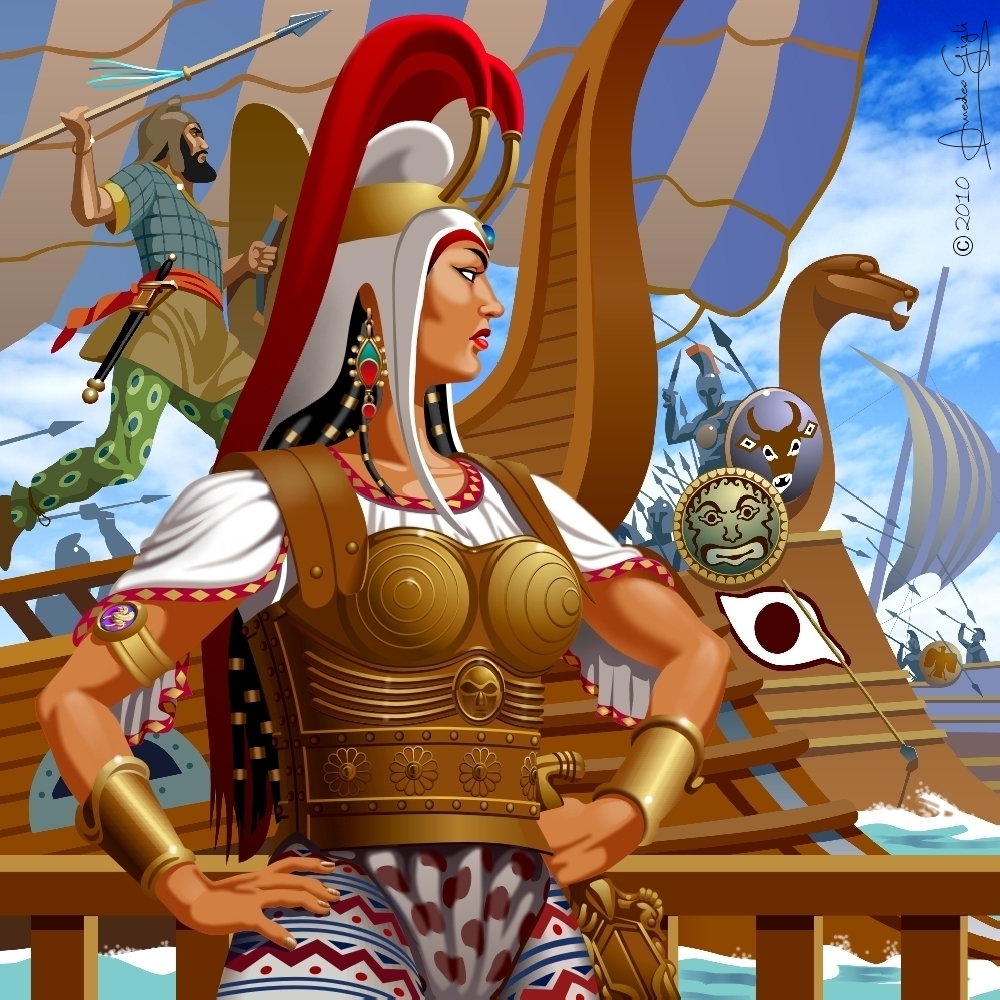
ARTEMISIA OF HALICARNASSUS
|
It is a known fact that courage is an essential attribute in winning life’s battles, in peace as in war. In fact, courage is often more important in peace than in war; and much more important in our complex relations with friends (or relatives!) than in those with so-called enemies.
Courage and, at times, luck. And as to courage, Artemisia of Halicarnassus, a ruler and a leader, the navarch of her own fleet, had more than enough. While the army of Persian King Xerxes was defeating the heroic resistance of Leonidas at the Thermopylae, thanks to a deserter’s betrayal, at the head of her ships, she was fighting the battle of Cape Artemisium, a battle that, according to Herodotus, neither side won though it is worth mentioning that the Persians lost many more ships and men than the Greeks. The fact of the matter is that, in that battle, Artemisia drew such attention to herself that Xerxes made her into a symbol of courage amid the “green” congratulations of his fleet’s other navarchs, while the Greeks, not to be outdone, put a ransom of 10,000 drachmas on her head. Thanks to the fame she had won on the seas, Artemisia became an extremely valuable adviser to the King whom she openly, and against the judgement of all the other navarchs, advised not to fight any other naval battles against the Greeks because, given the state of his fleet, he would have no chance of victory. Xerxes deeply appreciated Artemisia’s advice. As a woman, she had shown greater understanding in advising a less brutal solution but, apparently, the rules of democracy applied amongst the Persians and the majority decided to face the enemy ships in what is known to history as the battle of Salamis. Herodotus describes in detail all the facts and events that culminated in this battle, listing one by one the crews, armaments and commanders who took part in it. In spite of her opposition to it, Artemisia naturally threw herself into battle and the great Greek historian describes the mix of courage and luck that allowed her to win the highest praise for herself. The King, says Herodotus, recognising the insignia of Artemisia’s ship had no doubt that the ship she had rammed and sunk was an enemy vessel. It was a stroke of luck, so often adverse, that the entire crew of the ship drowned and none of those wretched sailors survived to tell the truth. The Persians were defeated, as Artemisia had predicted, and the King could not but summon her once again to his side to ask for advice. Artemisia, who by then was getting used to speaking out freely to the King, advised him to return to Persia leaving behind only a few vain generals who might want to finish off the military campaign on land. After reporting that Artemisia was chosen to accompany Xerxes’ family on their journey back home, Herodotus loses sight of her. A certain Ptolemaeus Hephestion, in his description of her, instead compares her life to a sort of Greek tragedy ending in suicide. The illustration was made using Corel Draw vector graphics. |
